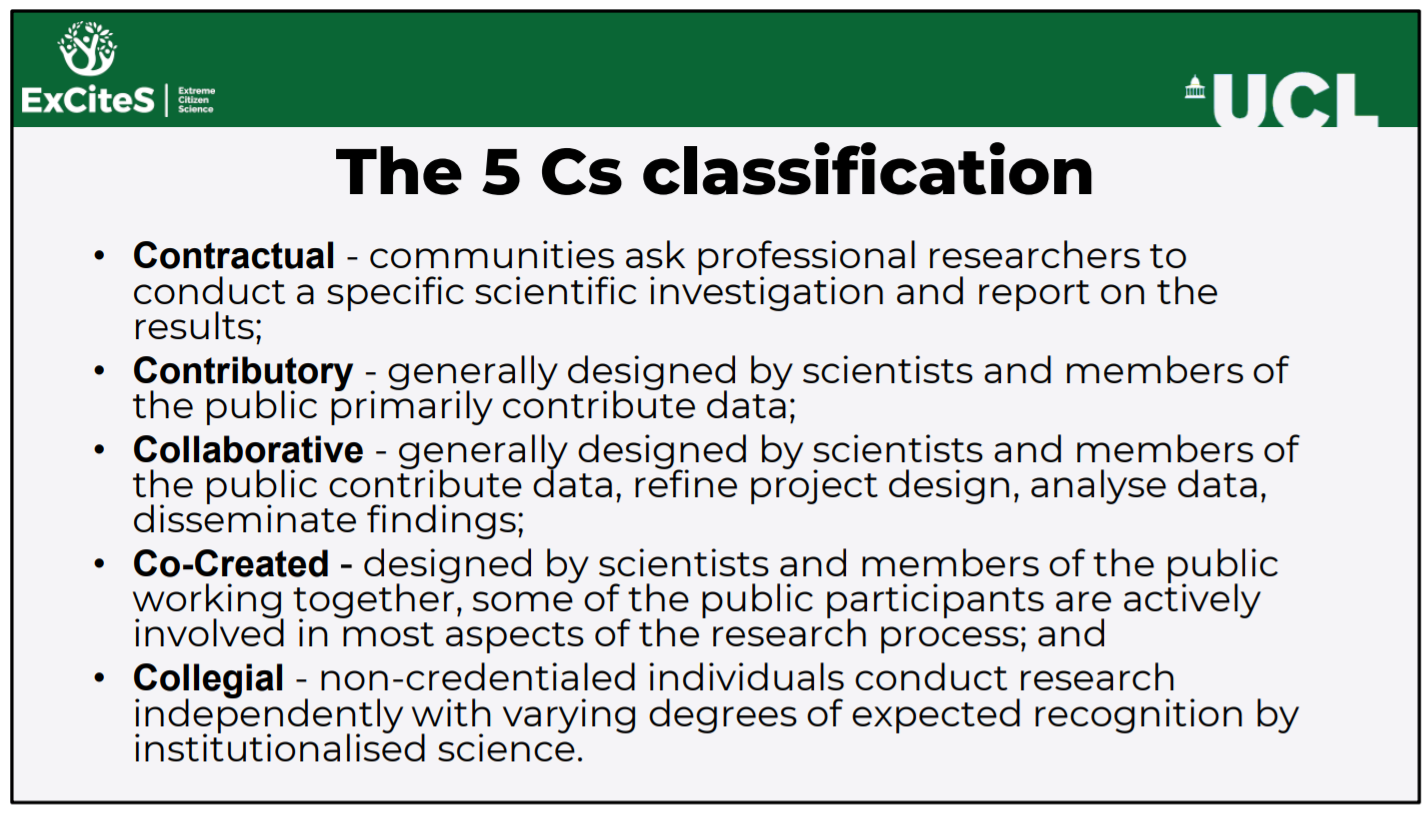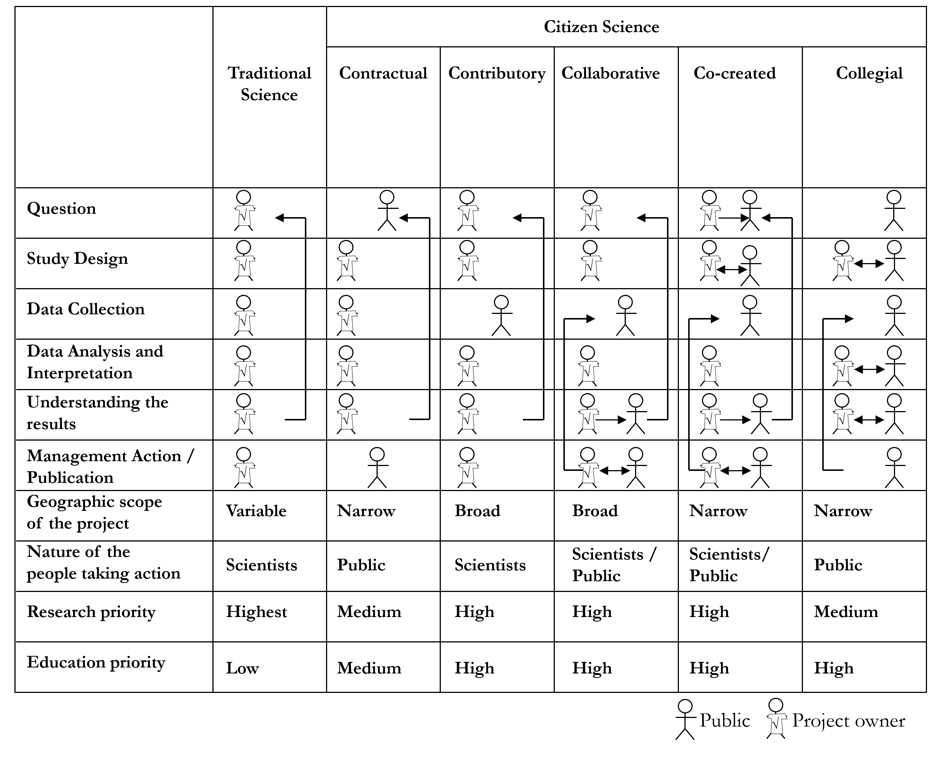You may wish to read this article as well as or instead of watching the video on the topic. You are not required to do both unless you want to.

Shirk et al wrote a hugely influential paper in 2012, which you can read here. They divide citizen science projects up into the following categories depending on the degree of participation:
Contractual projects, where communities ask professional researchers to conduct a specific scientific investigation and report on the results;
Contributory projects, which are generally designed by scientists and for which members of the public primarily contribute data;
Collaborative projects, which are generally designed by scientists and for which members of the public contribute data but also help to refine project design, analyze data, and/or disseminate findings;
Co-Created projects, which are designed by scientists and members of the public working together and for which at least some of the public participants are actively involved in most or all aspects of the research process; and
Collegial contributions, where non-credentialed individuals conduct research independently with varying degrees of expected recognition by institutionalized science and/or professionals.
Notice that in all these cases there is a degree of participation, but the main attention is on the role of project designers and owners.
Important aspects of this typology:
• It focuses on the relationships between scientists and participants, ignoring domain and technology, which is a major benefit
• Most citizen science projects are contributory, but there is no way to sub-categorise these
This typology is based on earlier work, a very important report that came out from the Center for Advancement of Informal Science Education (CAISE) work in in 2008-2009. The CAISE report identified three core types of citizen science; the "5C's" added another two categories. The CAISE report used the term "public participation in scientific research" as an alternative to the term "citizen science", which is a term with many meanings, and it also laid the foundation for the "5C's" typology.
The "5C's" paper authorship included people from citizen science practice, education and related areas. It was published in the Ecology journal and aimed at practitioners and scientists who design citizen science projects.
As with the Wiggins and Crowston paper, we need to examine who developed this typology. There is a clear link to the CAISE report, with all the CAISE authors included, but several more researchers were involved in the later paper: the authorship is therefore a mixed background from citizen science and education, especially informal education. The classification was published in "Ecology and Society", aimed at people who might organise a citizen science project, or ecologists who might consider citizen science as part of their research in the future.
The goals of the "5C's" typology were:
Specifically, it suggests a way to design projects and their evaluation. The paper consists of two parts, and the attention is focused on the degree of participation by citizen scientists in the research process. They point out that "Degree of participation is a dimension that can be quantified, compared and/or standardized. By comparing projects that demonstrate different degrees of participation, we can account for and examine the relationships between participation and various outcomes." If you are interested in the topic of evaluation of citizen science, you are also likely to come across this paper.
We can now start looking at aspects of the research process in more detail, with the following table adapted from the paper "Citizen Science as a Tool for Conservation in Residential Ecosystems" from 2007, which can be mapped also to the CAISE report. This table examines whether citizen scientists ("public") and project owners participate in various stages of a research project:

The second column explains the Contractual model – this is something that can happen when a community group engages scientists on an issue that concerns them, for example possible pollution being emitted from a combined heat and power plant locally. The area is usually narrow, and may involve mechanisms such as "science shops" in which universities create an office where community members can come and ask a question, and the university will recruit student volunteers to work on the issue with some supervision from an experienced scientist. At UCL, we have the Engineering Exchange that follows this model. Notice that the research and education elements are both at the medium level, and therefore limited.
The Contributory model is the most common in citizen science, although we already have seen that participants don’t only participate in data collection, but also in basic analysis (e.g. the micro-tasks in Galaxy Zoo). In the area of ecology, indeed data collection is the most common. Notice that both the research and education are a priority here and the coverage can be extensive. Also notice that in terms of the results, they are mostly shared with other scientists (so scientific outputs are the priority here).
The relationships in the next model, the Collaborative model is more complex. The scientists are setting the question, and most of the time design the study. Participants are involved not only in data collection but also in understanding the results, which might lead to refining the research questions. There is also collaboration on the use of the results, with participants also expected to be involved in taking an action.